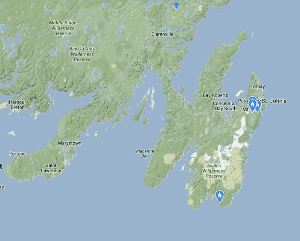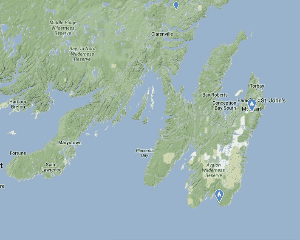So far I've only identified the Northern Amber Bumble Bee with confidence, and the Fernald Cuckoo Bumble Bee with a little less confidence. It seems that about 20 - 30% of the bees I see are Northern Amber Bumble Bees, and over 50% are Fernald Cuckoo BB's. I've caught at least 2 other species but haven't been able to identify them yet.
I caught two Northern Amber Bumble Bees and now have them as specimens. Today I took photos to demonstrate how I identified them using the method laid out in the guide book.
Here's a picture of a Northern Amber Bumble Bee (Bombus borealis):
The first step towards identifying female (which most of the ones we see are) bumble bees is to look at the tibia of the hind leg. In the Northern Amber BB it is flat, reflects light, and has no hair on the broad surface, but long hair on the front and back edges of the tibia:
The next step is to look at the midleg - the distal (bottom) posterior (back) corner of the basitarsus (last large segment of the leg + foot) is pointed not rounded.
The mandible has 3 (?) keels that extend along the outer surface. The front most keel extends all the way to the distal margin of the mandible. This is not easy to see and requires the correct angle of light.
In the above photo you can see that the flat surface (clypeus) - between the eyes and below the yellow hair - is smooth and shiny.
Also, the hair just above the clypeus is not black, but a creamy-yellow colour that is paler than the hair on the Tergum (the upper surface of the third body part).
dIn the next photo you can see the stinger of the bee. Preceding this are two sections (T5 & T6) of the tergum that are entirely black, and preceding these two sections are another 4 sections which are entirely golden-yellow (T1 - T4).
The Yellow Warblers in my yard had 4 eggs in their nest last week - which have now hatched:













































